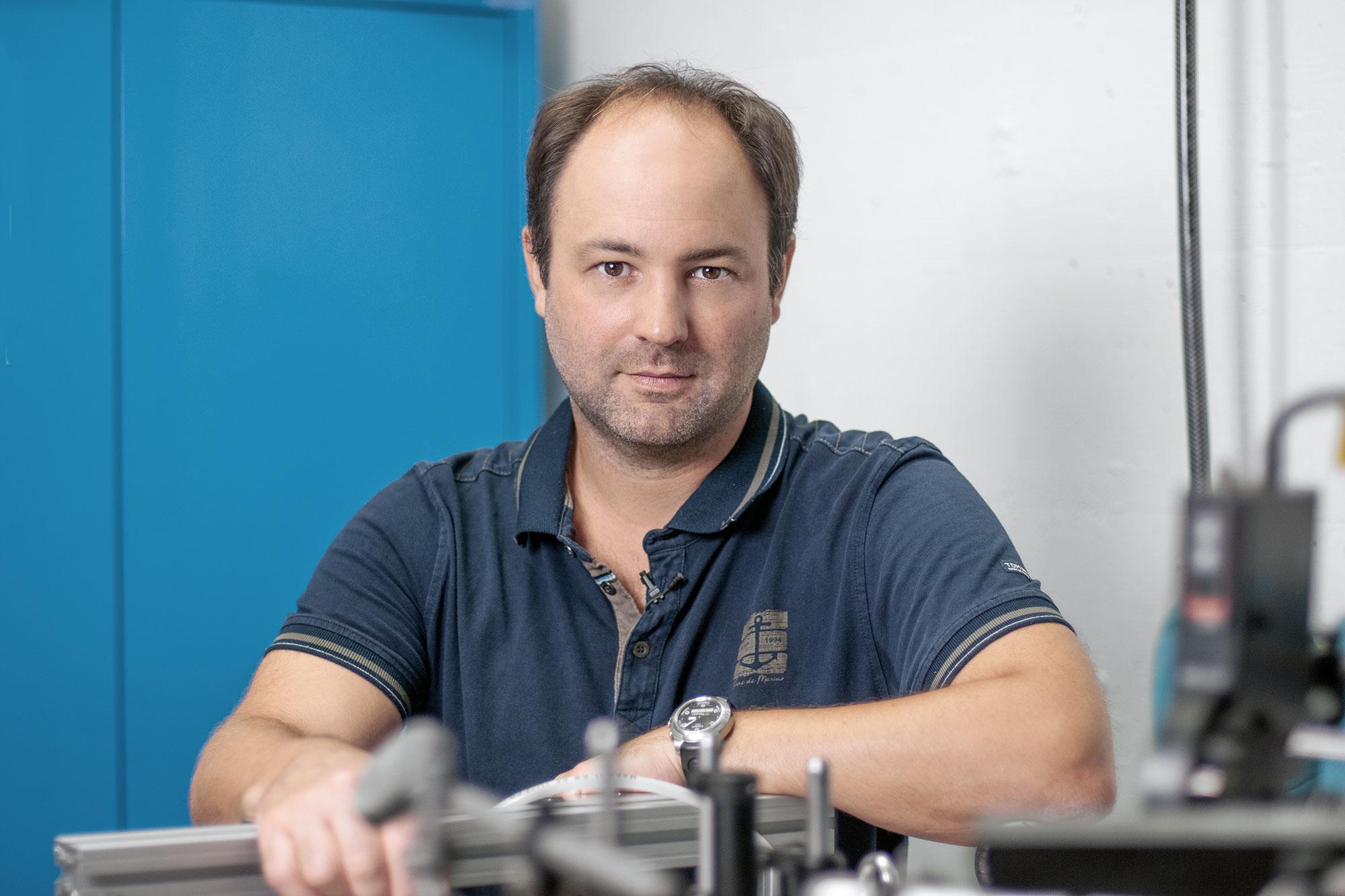The fascination of Mars

From his lab in Bern, Antoine Pommerol investigates the bodies in our solar system. His main interest is Mars and possible signs of life there.
Antoine Pommerol might spend a good part of his time in the basements of the University of Bern, but his head is right up among the stars. The scientist is trying to decipher the characteristic features of the planets, small celestial bodies, dust, icy moons and other asteroids in our solar system in a bid to better understand how they were formed and how they have evolved. He is particularly fascinated by Mars. "That’s because it has the most resemblance to the earth of any body in the solar system: it’s a tremendous playground if you’re also interested in geology, and also because we can analyse it in detail as we have lots of data on it”.
Reproducing Mars in the lab
Originally from France, Antoine Pommerol came to Bern in 2009 on a grant from the Swiss National Science Foundation. He has been in the Swiss capital ever since. One of his university’s areas of expertise is space mission instrumentation. The scientist particularly enjoys being able to work on different aspects, from mission design through to processing and analysing the data collected. “Space research is long-term in nature. In some cases there can be a forty-year gap between the start and end of a project. It’s satisfying to be able to work on shorter-term projects at the same time and to get answers during your career”.
In connection with this, he appreciates the freedom given to him. “I like to keep some experimental work so I can test, measure or tinker with things. It might be hard to imagine, but in addition to the impressive cutting-edge instruments I use, I sometimes also need a bit of sticky tape or a small spoon to complete an experiment, say to fill a container,” he says with a smile.
This could include experiments to attempt to reproduce what happens on Mars. Drawing on data gathered by space probes, the researcher is trying to use analogues – materials that are as close as possible to those found on the actual planet – to recreate the phenomena responsible for the things the probes observe.
For several years now, the ExoMars Orbiter has been providing dozens of colour images every day. These images show bluish zones that disappear at daybreak in the polar regions. “We can go a long way in testing various hypotheses that might explain the phenomenon. For example, could a layer of frost produce this result? And if so, how thick would it have to be? Using our analogues, we have been able to reproduce something very similar with a layer of frost 50 micrometres – that’s 50 millionths of a metre – thick,” he tells us enthusiastically.
The inevitable question of life on other planets
The planetary scientist is still a long way from becoming bored with his favourite research subject, because another issue – that of possible evidence of life – has been occupying him for some time. The issue has become a key part of space programmes. “The question of what life is, how you define it and the possible forms it could take is fascinating. It’s a challenge that’s attracting increasing attention from the planetary science community: even though it’s a difficult question to tackle, it’s one we can’t dodge indefinitely,” he explains. Antoine Pommerol is therefore taking a growing interest in biosignatures – physical or chemical traces that could have been left by life forms – and how widespread such biosignatures are. He also has to bear in mind the possibility that some forms of life might be completely different from how we imagine life today and might therefore be impossible to detect using biosignatures. “For the moment, we’re working with what we know. Whether or not we’re on the wrong path will be a subject for research work in the centuries ahead,” is his assessment.
Besides, Antoine Pommerol already has ideas for the future. He has his eye on Uranus and Neptune, planets that remain under-investigated and which he believes could be good for a few surprises.
Links
- Image for editorial use (JPEG), caption: Antoine Pommerol, ©SNSF
- Video
- Antoine Pommerol’s projects on the SNSF Data Portal
- SNSF Twitter feed